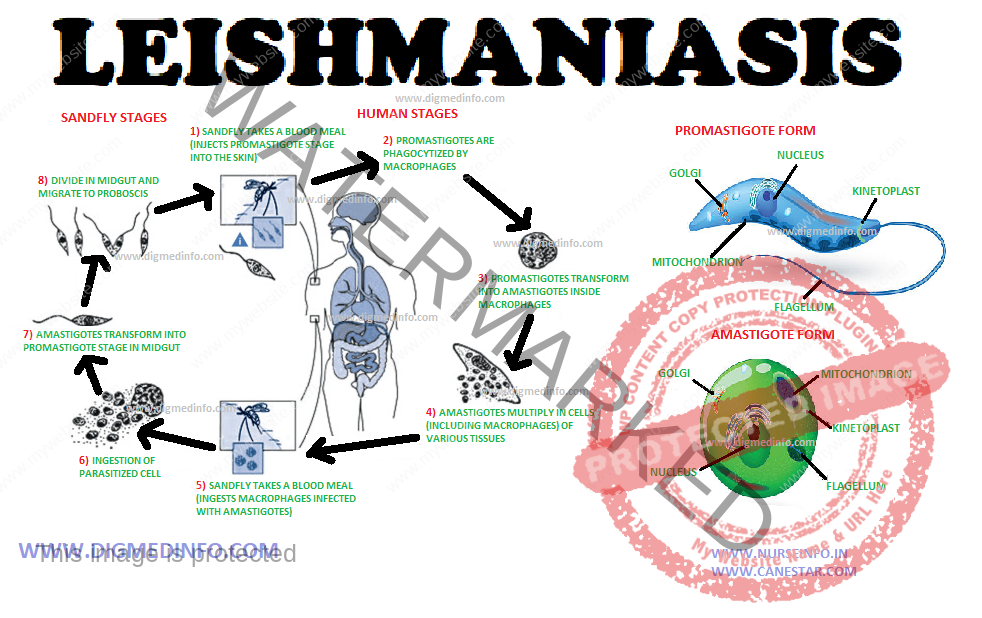LEISHMANIASIS – General Characteristics
Infection by the protozoan parasite of the genus Leishmania causes leishmaniasis. This may take several forms. In India, the infection is prevalent in almost all states sporadically. In the northern states it occurs in endemic and epidemic forms. The main clinical presentations seen in India are visceral leishmaniasis (kala-azar), post kala-azar dermal leishmaniasis and the primary cutaneous forms — tropical sore; known by different names. India contains 70% of the global burden of visceral leishmaniasis WHO has categorized leishmniasis as a category 1 disease (i.e.) emerging and uncontrolled.
The parasite affects mainly the reticuloendothelial organs and the related endothelial cells primarily. Several vertebrate species may be affected by leishmania. In India, humans form the main reservoir of infection. In the Mediterranean areas, Africa and America other animalsalso harbour the parasites.
a. L. donovani is the main species that causes visceral (VL) and post kala-azar dermal leishmaniasis in India. In other countries other species also produce the disease.
b. L. tropica, L. major, L. aethiopica that cause oriental sore the primary cutaneous form
c. L. amezonensis – Mucosal form,
All these species are morphologically similar but not immunologically. The parasite exists in two forms
i. amastigote form, oval or rounded and nonmotile present in reticuloendothelial cells and ii. promastigote leptomonad or flagellate form seen in the vector – phlebotomus sand flies in which they develop and become infective in 7 days.


